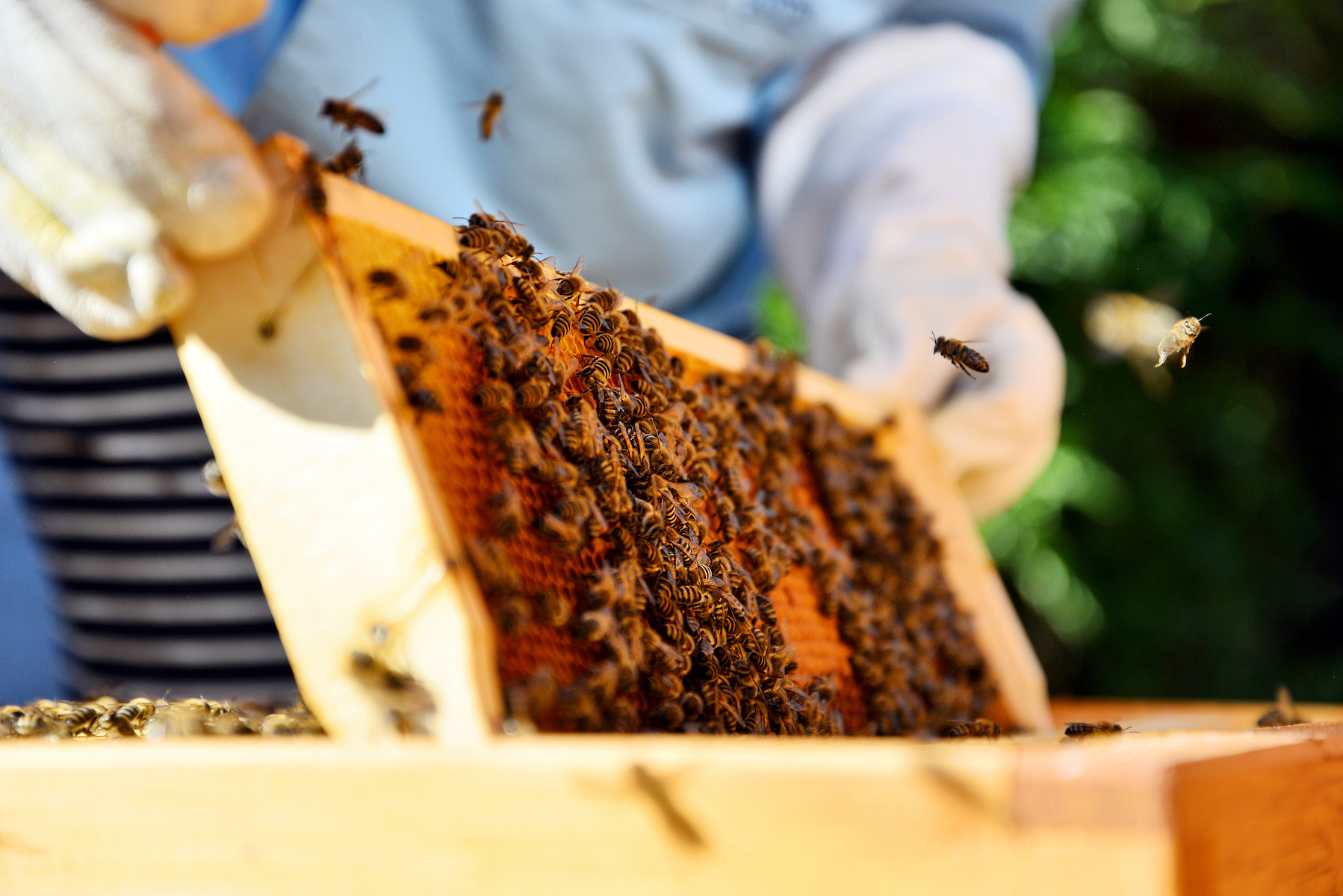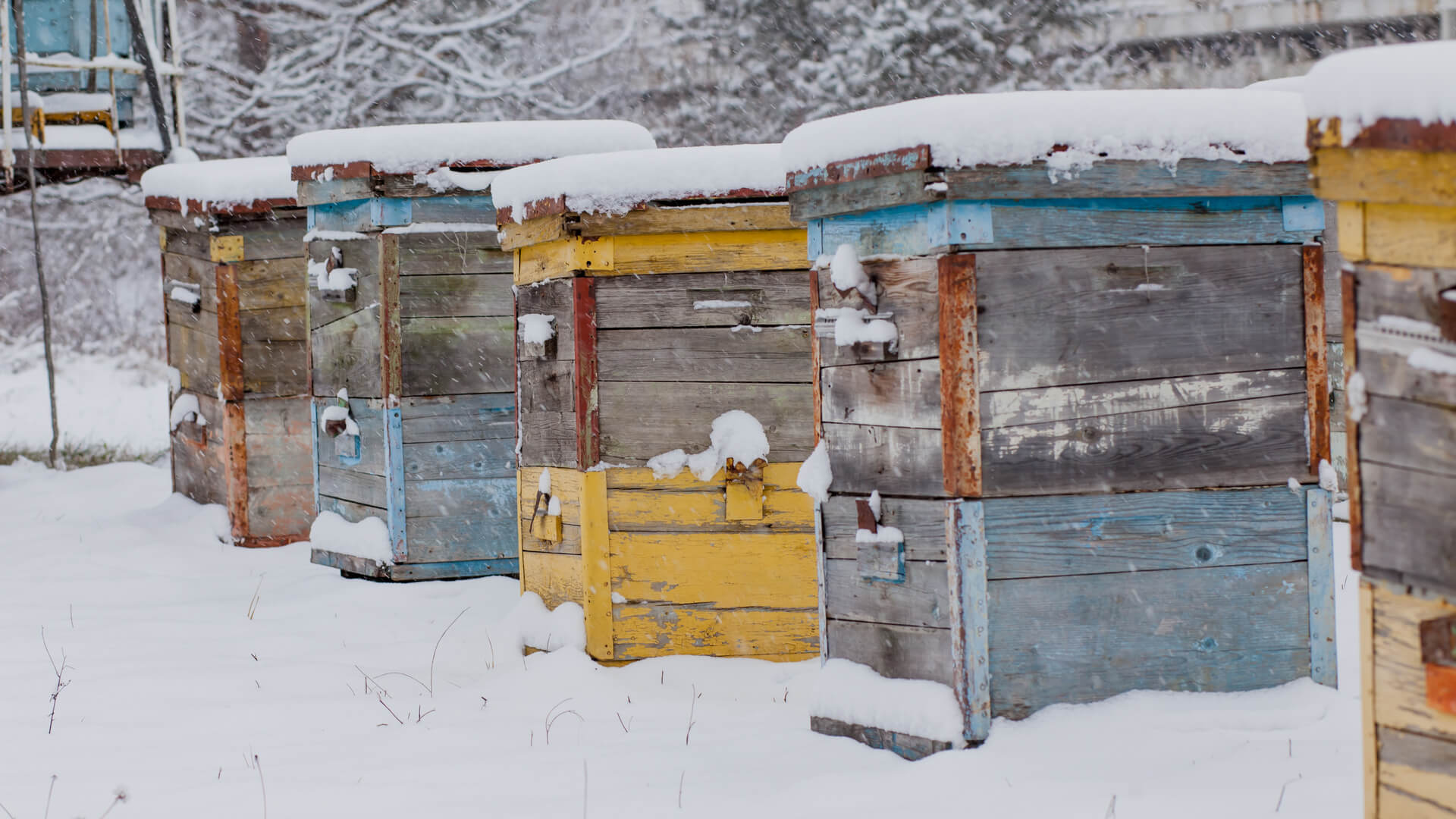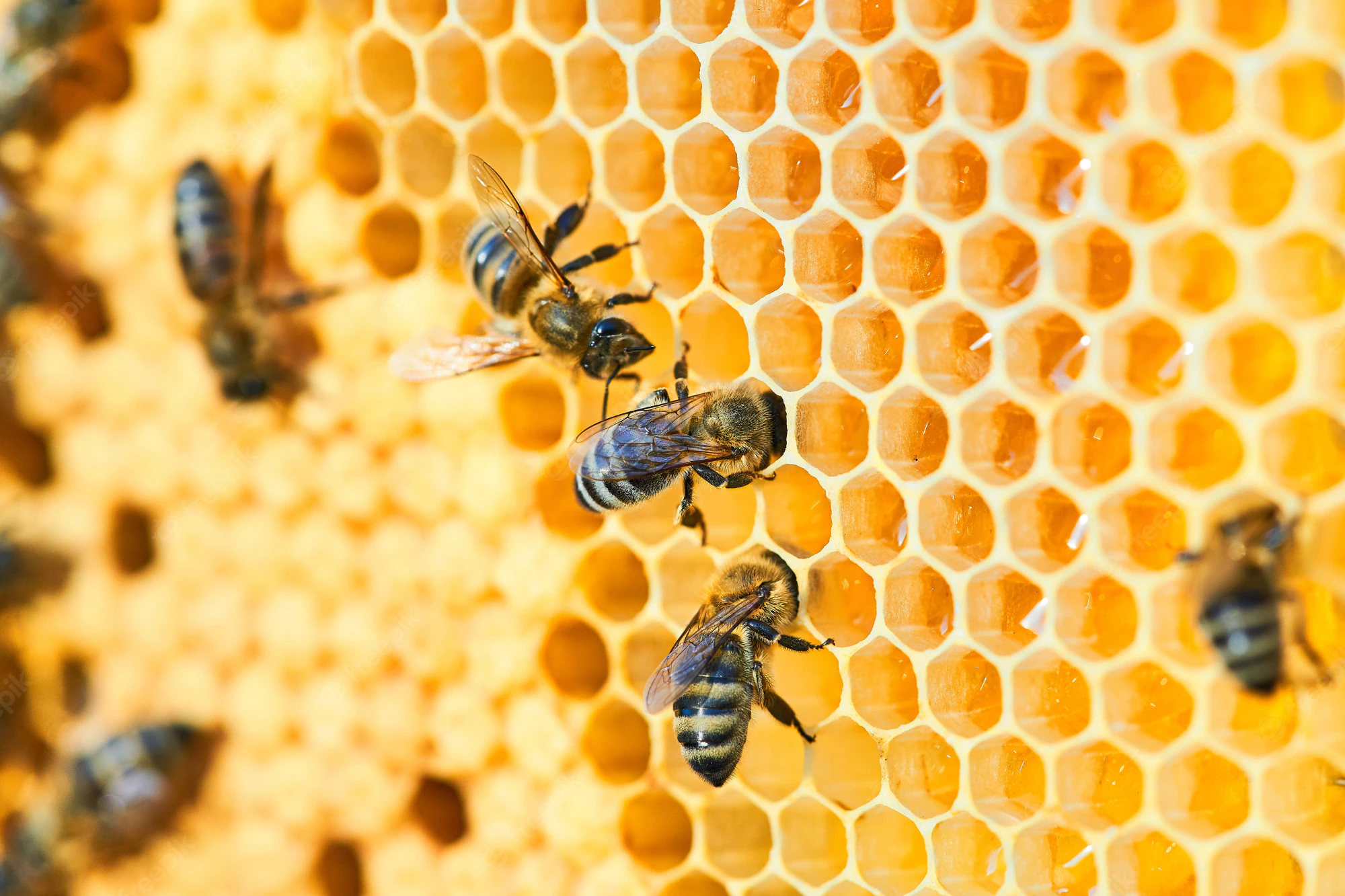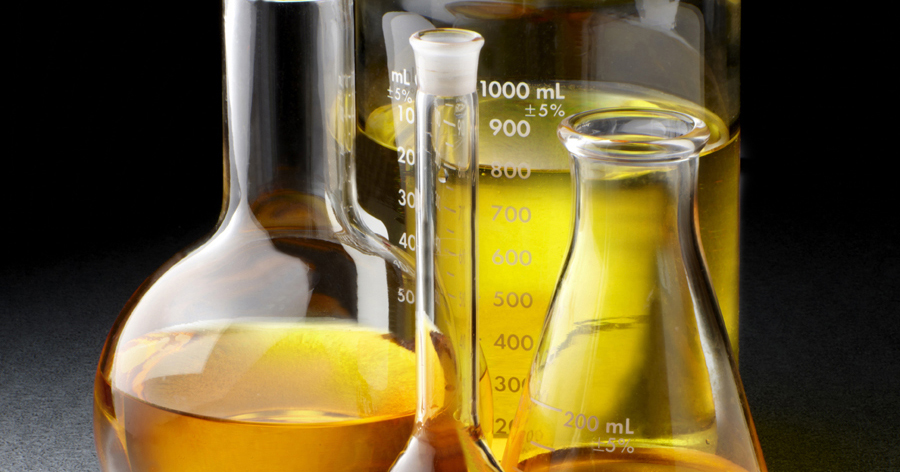Bees produce honey as a food source to sustain them throughout the winter when it is too cold for them to go out and collect nectar or pollen. For reasons that are unknown, they produce 2 – 3 times more honey than they need, and it is this excess honey that beekeepers harvest for human consumption.
The Hive

Before we go much further, lets define some important parts of the hive and their purpose, in particular, we will discuss the Langstroth style of hives. At the bottom of the hive is a solid bottom upon which a brood chamber sits. On three sides of the hive, the brood chamber sits perfectly on top of the bottom board, while on the fourth side, a small gap is left to allow bees to move into and out of the hive. Inside the brood chamber are removable frames upon which the bees make their honeycomb – it is in this section of the hive that the queen lays her eggs and the bees store the honey they will need to feed them throughout the winter. Above the brood chamber is a queen excluder – a mesh-type layer with openings small enough for worker bees to pass through, but too small for the queen to pass. This keeps the queen out of the upper levels of the hive, ensuring that she only lays eggs in the lower brood chamber. The section(s) above the queen excluder are called “supers”. Supers are almost identical in structure to the brood chamber (although are typically more shallow), containing removable frames upon which bees build their honeycomb. In the supers, the honeycomb is used exclusively for honey, and it is from here that the beekeepers harvest the honey from the hive. Some beekeepers add entrances directly to these upper levels, allowing for easier access for the worker bees. There is no concern that the queen may find her way into the supers through this opening, as the queen only leaves the hive one time, early in her lifetime for one to two days to mate. An inner cover is placed on top of the supers, and on top of this sits an outer cover. There is a small gap between the inner and outer cover, which some beekeepers believe help the hive with moisture and temperature regulation. The outer cover protects the hive from the elements, such as rain or direct sunlight.
Harvesting Honey
With the anatomy of the hive out of the way we can talk about how beekeepers harvest honey! As we mentioned in our post about how honey is made, bees seal off mature honey with a thin layer of wax (capping) to prevent the honey from taking on any moisture from the environment. Beekeepers monitor the frames and when enough cells are capped (typically at least 75 – 90 %, depending on the beekeeper and region), the harvesting process begins. To prevent the bees from panicking during this process, the beekeeper can use a fume board or a smoker. A fume board is similar in structure to an outer cover, and is sprayed with a non-toxic solution that the bees do not like. This causes the bees to retreat into the lower layers of the hive, allowing the beekeepers to remove the super without too much disturbance to the bees. A smoker is used to puff smoke into the hive, which masks the bees alarm pheromones, giving the beekeeper time to work before the bees defensive response is triggered. When using a smoker, beekeepers are careful to use as little smoke as possible to avoid any potential harm to the bees. In both cases, beekeepers wear protective clothing and move slowly are carefully with working with the hives. Once the super has been removed, the covers are placed back on the hives and the supers are taken away for extraction.
 First, the wax cappings covering the mature honey is removed. This can be done with a specialized tool called a “capping fork” or something as simple as a knife. The uncapped frames are then placed in an extractor, which spins the frames and used centrifugal force to separate the honey out of the honeycomb – with this method, the frames can be placed back into the super, honeycomb intact, and reused the following season. The extracted honey collects at the bottom of the extractor, and by opening a valvue, can be poured into storage containers or jars. Alternatively, the honey filled comb can be removed from the frame, crushed, and strained through a cheesecloth – this method requires the bees to rebuild the honey comb the following season, but yields a significantly greater wax harvest than the extractor method. The beekeepers choice of un-capping and extraction method(s) depends on several factors, including the size of their operation and the number of hives that must be harvested.
First, the wax cappings covering the mature honey is removed. This can be done with a specialized tool called a “capping fork” or something as simple as a knife. The uncapped frames are then placed in an extractor, which spins the frames and used centrifugal force to separate the honey out of the honeycomb – with this method, the frames can be placed back into the super, honeycomb intact, and reused the following season. The extracted honey collects at the bottom of the extractor, and by opening a valvue, can be poured into storage containers or jars. Alternatively, the honey filled comb can be removed from the frame, crushed, and strained through a cheesecloth – this method requires the bees to rebuild the honey comb the following season, but yields a significantly greater wax harvest than the extractor method. The beekeepers choice of un-capping and extraction method(s) depends on several factors, including the size of their operation and the number of hives that must be harvested.
Processing Honey and Labels
The collected honey is strained to remove any bee parts or large chunks of wax. Depending on the producer or packaging company, the honey may or may not undergo further processing. The definition of raw, unpasteurized, and unfiltered honeys may vary depending on who you ask: a beekeeper, a retailer, a health blogger, a honey connoisseur, or the CFIA. Below, we try to give a general explanation for the different labels you may see on your jar of honey.
Raw Honey
In the case of raw honey, no further processing steps are performed before packaging and sale, leaving the honey to contain small amounts of wax, propolis (a compound used by bees to help build honeycomb), and the maximum amount of pollen, enzymes, and antioxidants. Often defined as either unfiltered or strained – the people using these terms are implying the same thing. Straining is technically a form of filtration referring to the removal of large particles, while the term ‘filtered’ is commonly used to refer specifically to the removal of very small particles. Since these are often considered to be separate processes, honey that has been strained is often considered unfiltered and is labelled as such. Due to the abundance of small particles present in raw honey (pollen, wax, etc), raw honey crystallizes very quickly – often by the time it reaches store shelves.
Pasteurized vs. Unpasteurized
Pasteurization refers to the process of heating something to a very high temperature and then cooling is rapidly, and is done to kill any microorganisms that may be present in a food product. Pasteurized honey is highly heated during processing to destroy any sugar-tolerant yeasts present in the honey – this gives the honey a smoother texture and longer shelf life, but also causes the breakdown the enzymes and antioxidants present in honey.
Unpasteurized honey is also heated, but only slightly – not to high enough temperatures to cause the breakdown of any enzymes or antioxidants in the honey, or to kill any microorganisms. The final product contains many of the same nutritional properties as raw honey, but will take longer to crystallize. When honey is heated, even only slightly, it returns to its liquid form, allowing any remaining waxes to float to the top, where they can be easily scraped off and removed (this is what allows unpasteurized honey to remain in its liquid form longer than raw honey). Returning honey to its liquid state also makes the process of packaging it into smaller containers or jars much easier.
Filtered vs. Unfiltered
As mentioned when discussing raw honey, ‘filtered’ and ‘strained’ are considered to be separate processes. Filtered honey is honey that has been filtered through a very fine sieve such that the majority of solids have been removed from honey – including pollen. The goal of filtering honey is solely to create a more “attractive” product – one that is aesthetically pleasing and has a long shelf life. Filtered honey may or may not be pasteurized, but has assuredly been exposed to some degree of heat in order for it to be able to pass through the filter in liquid form.
Unfiltered honey has been strained, but not filtered – but unfiltered honey is not necessarily synonymous with raw honey (all raw honey is unfiltered, but not all unfiltered honey is raw). Raw honey is strained when it is harvested (and is still in liquid form). If the raw honey has been stored after harvesting, it has likely crystallized, and will need to be heated before it is packaged into consumer containers. In this case, the honey can no longer be labelled as raw honey, but provided it does not undergo any additional filtration, the honey is still considered unfiltered.





Leave A Comment